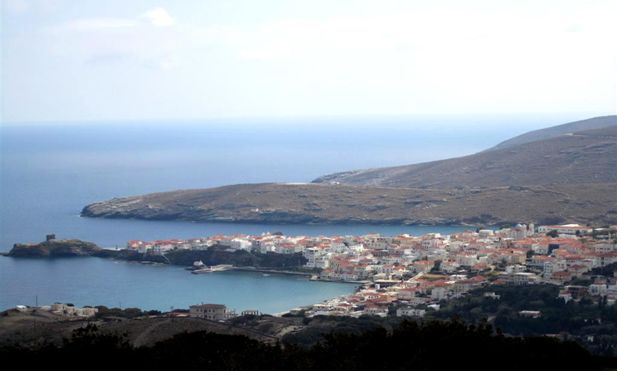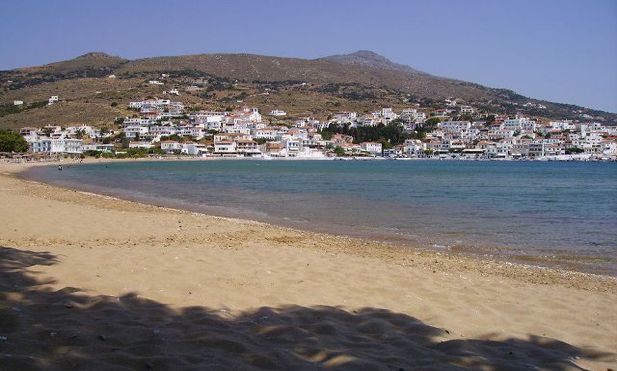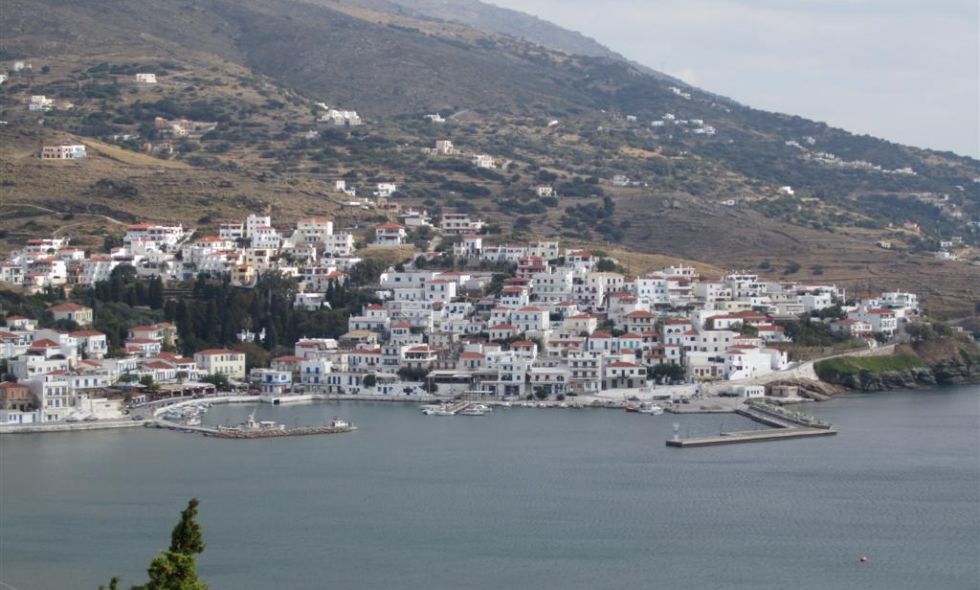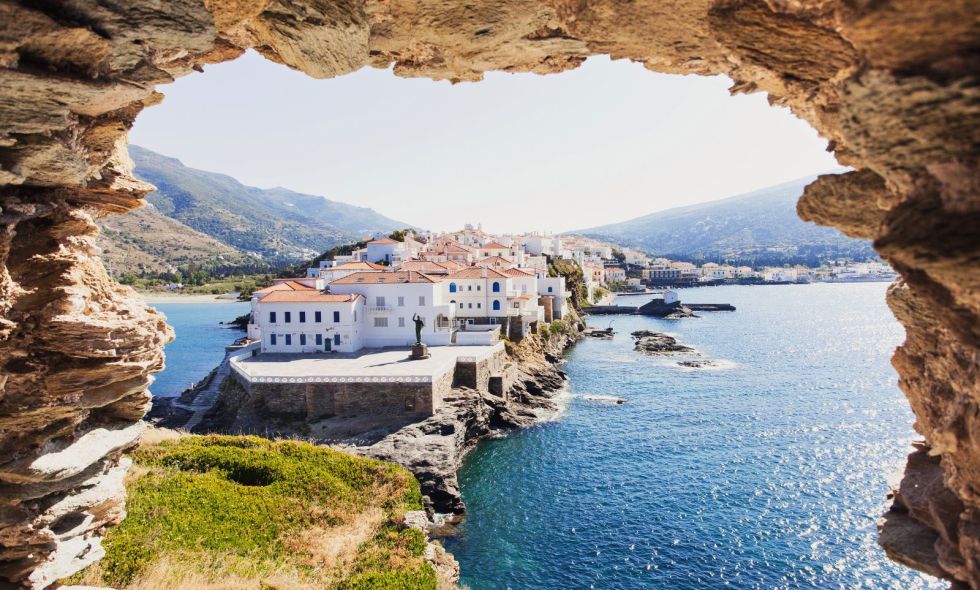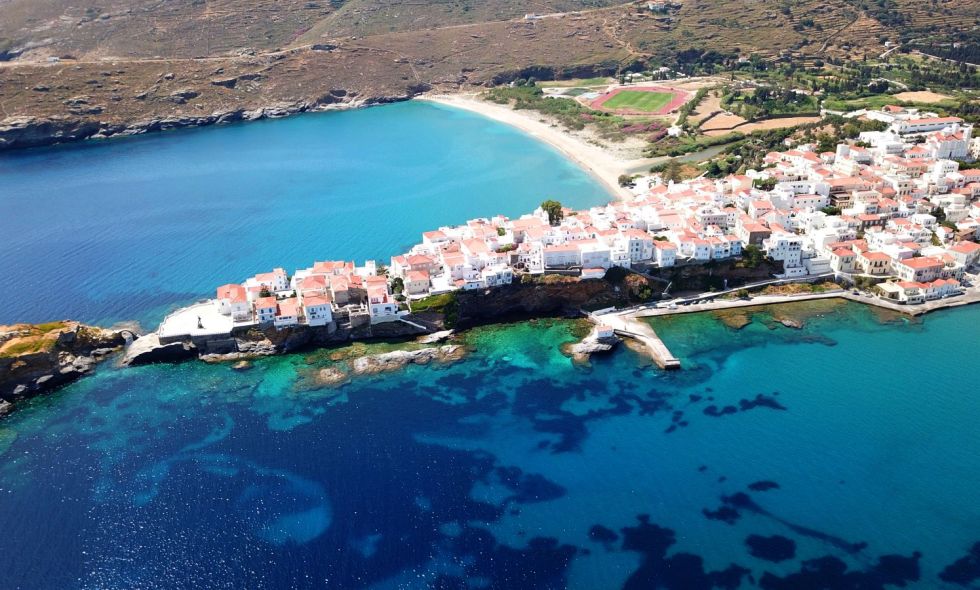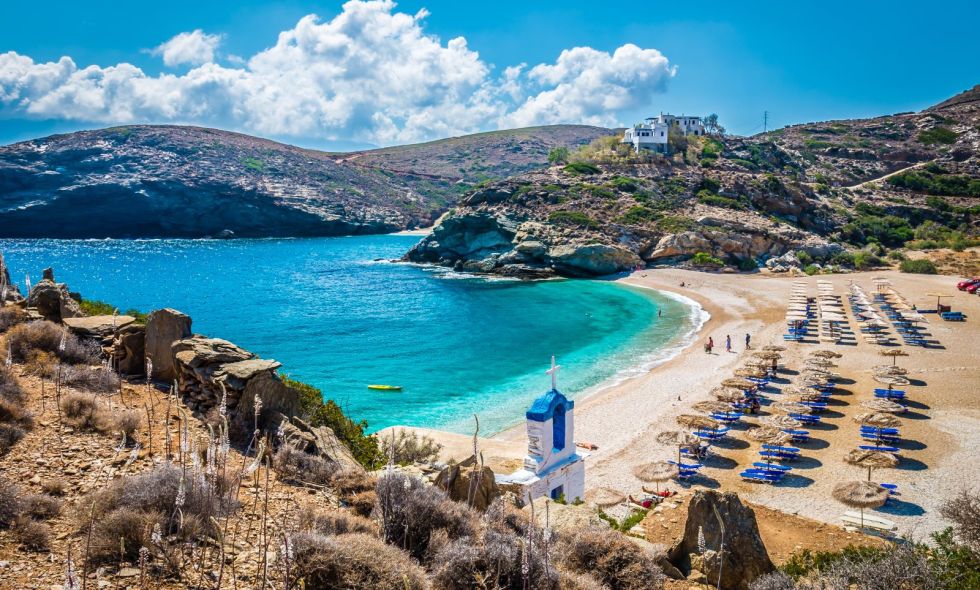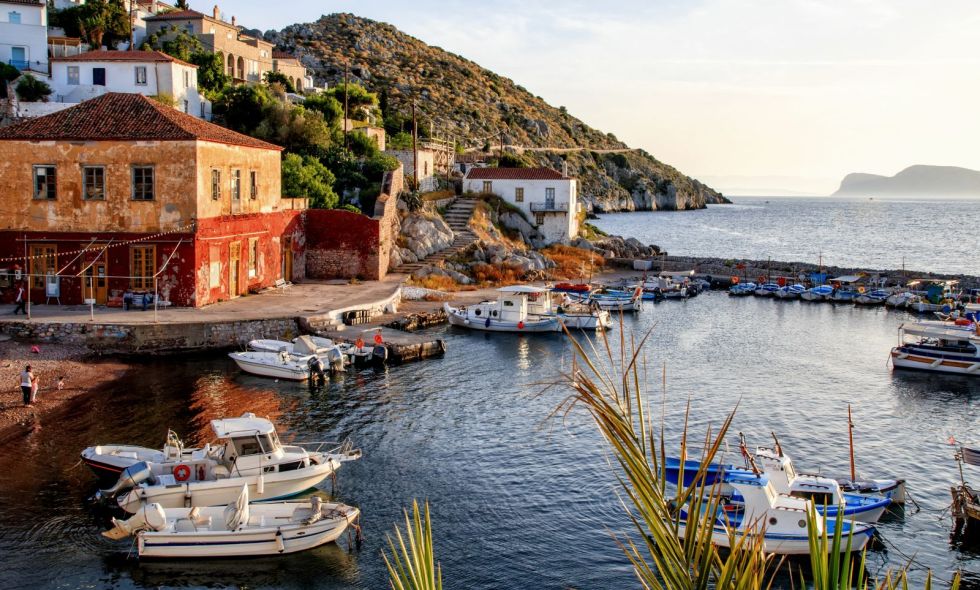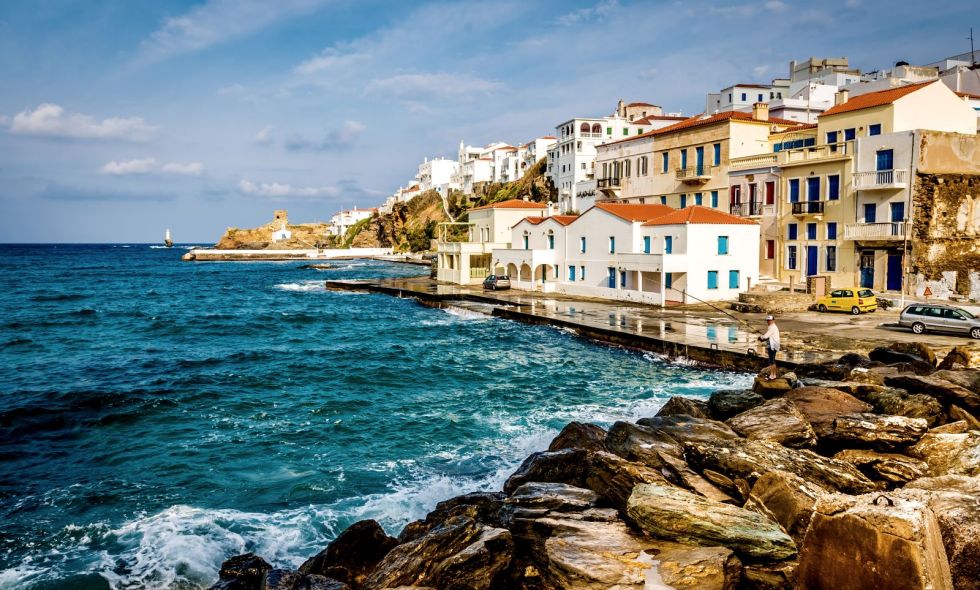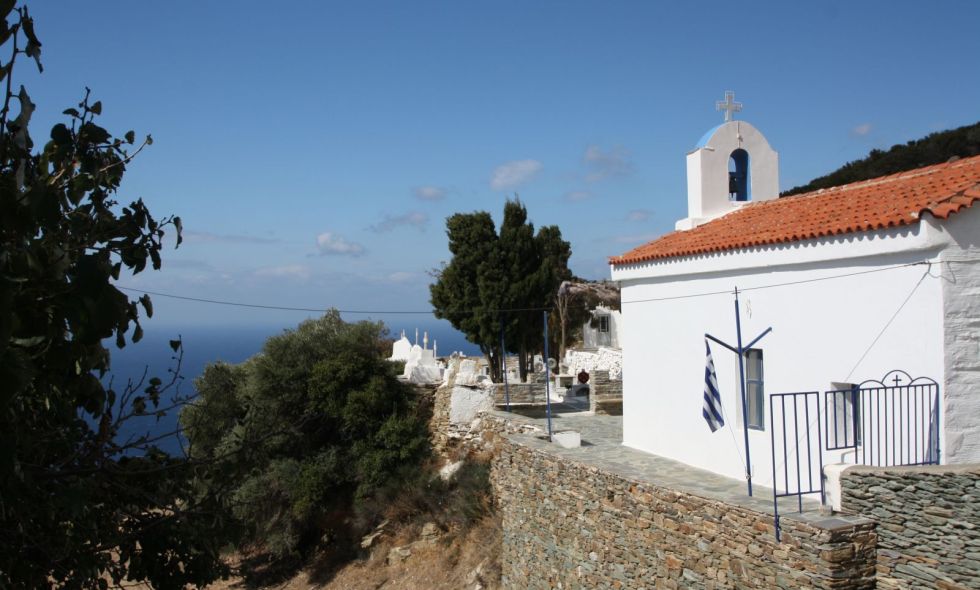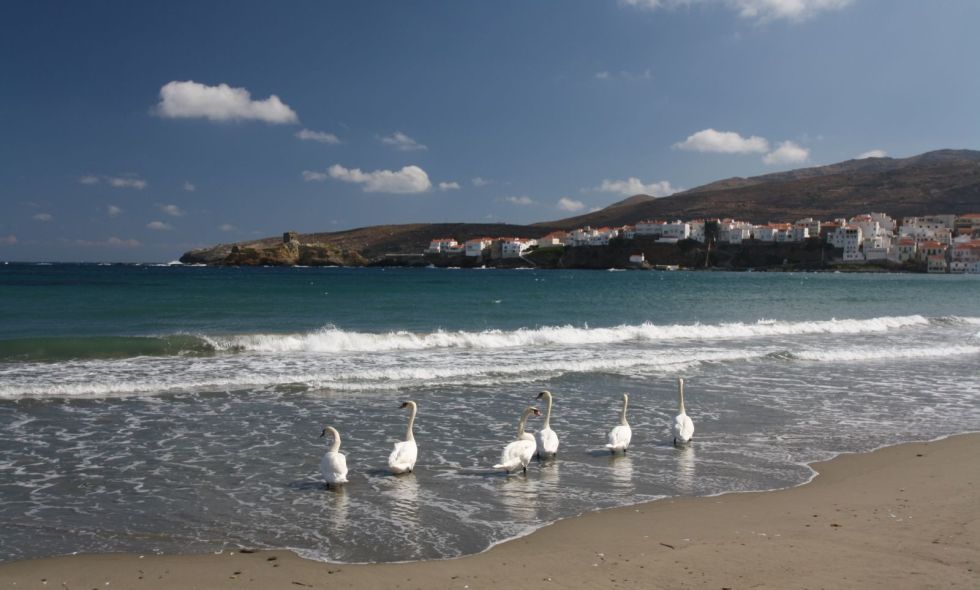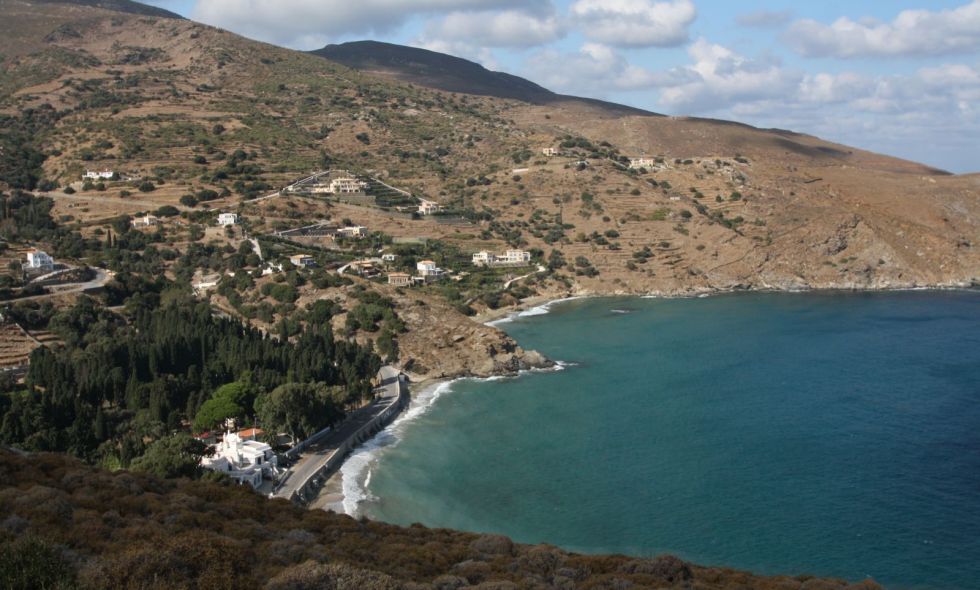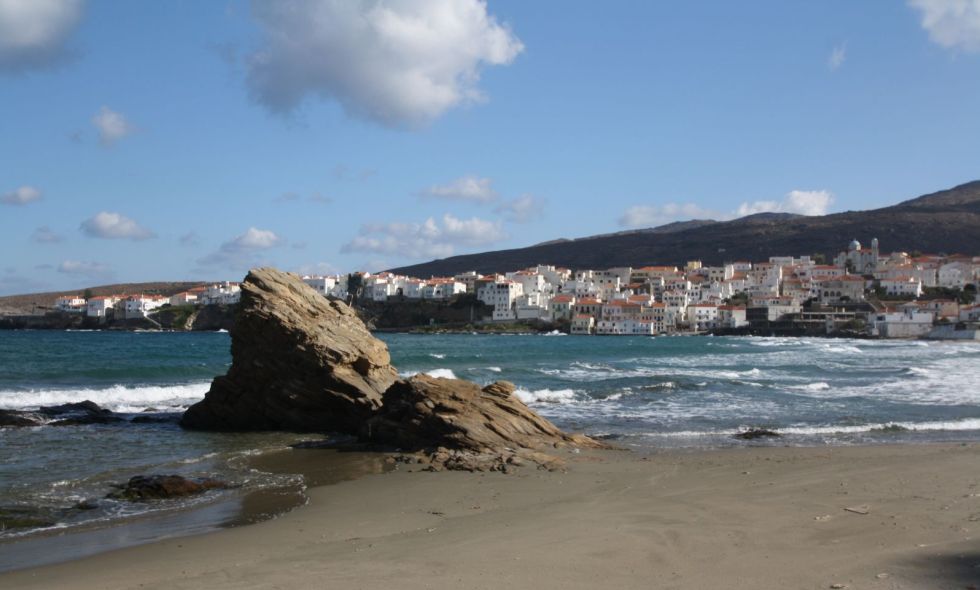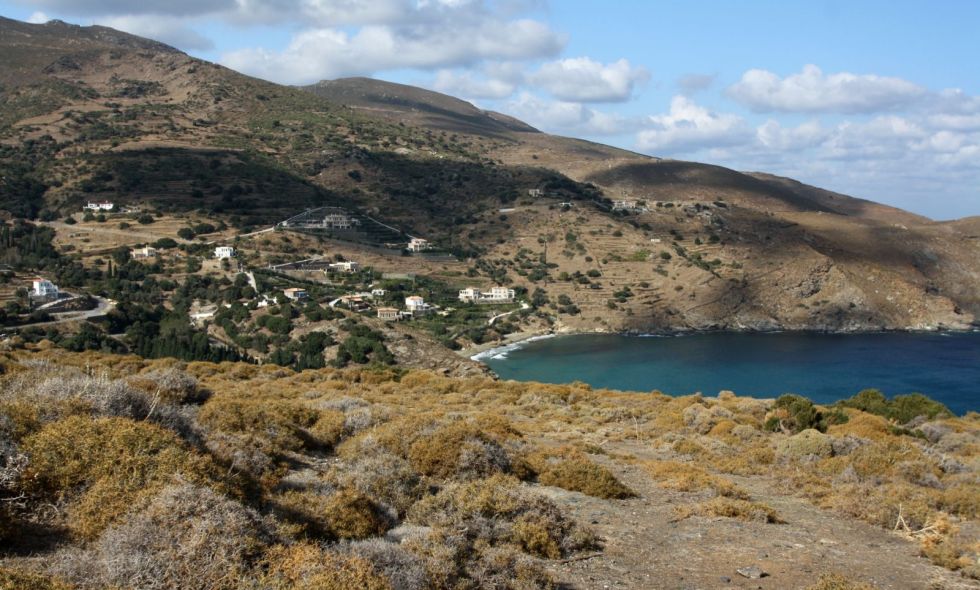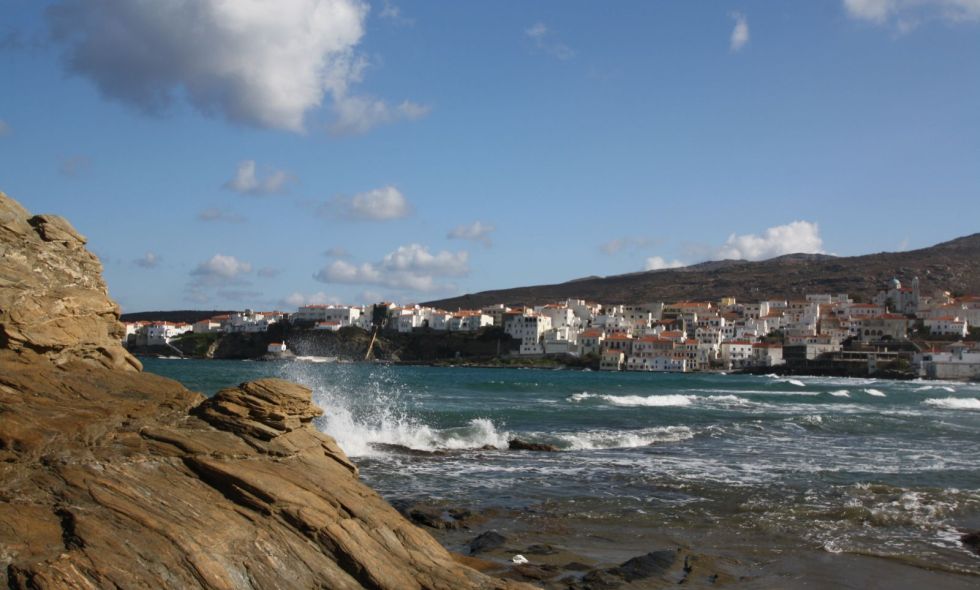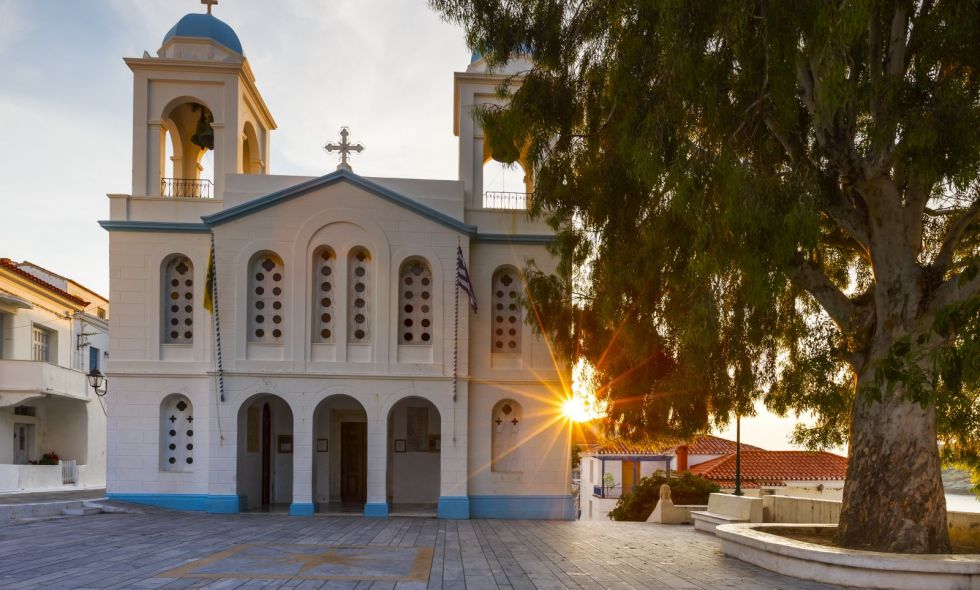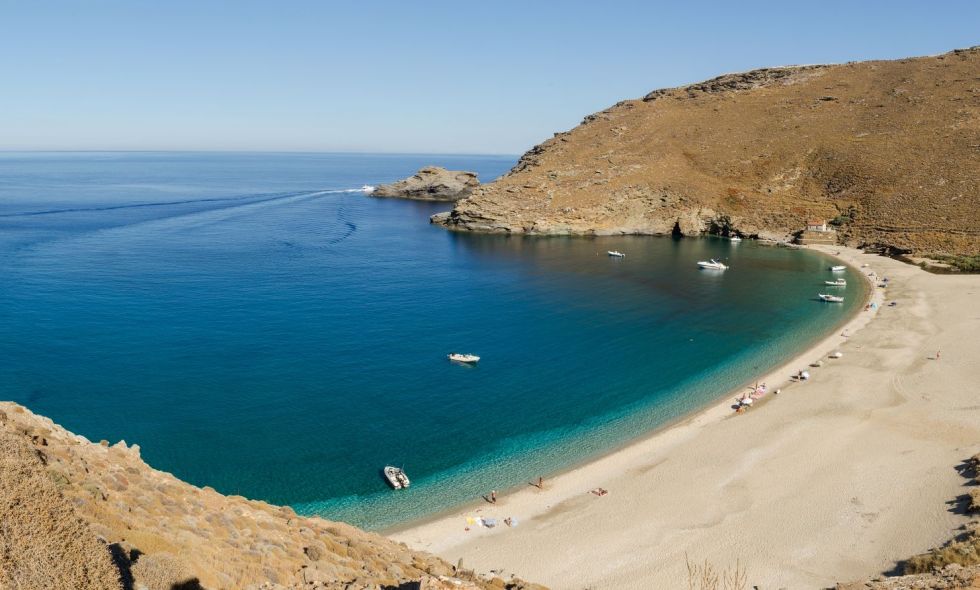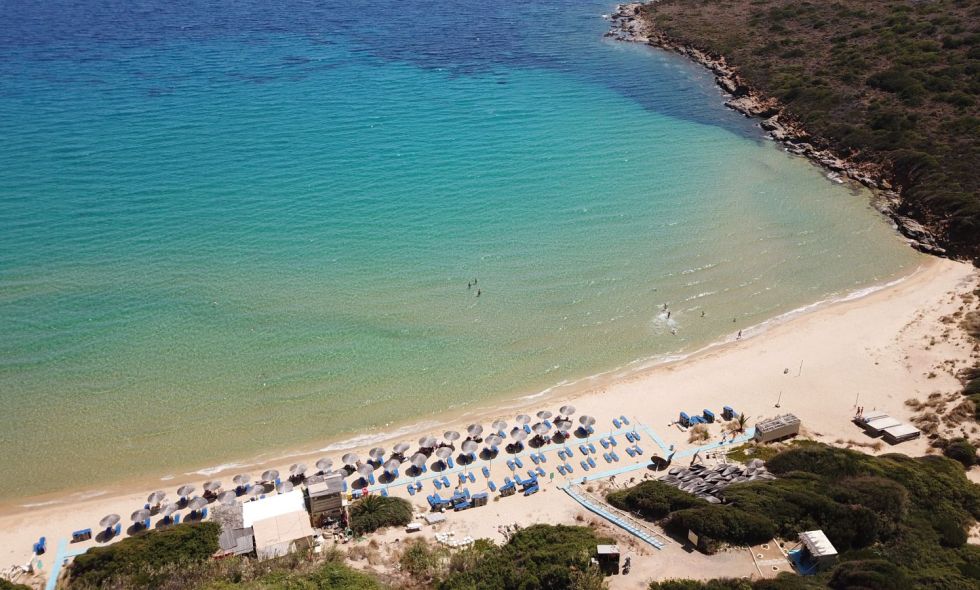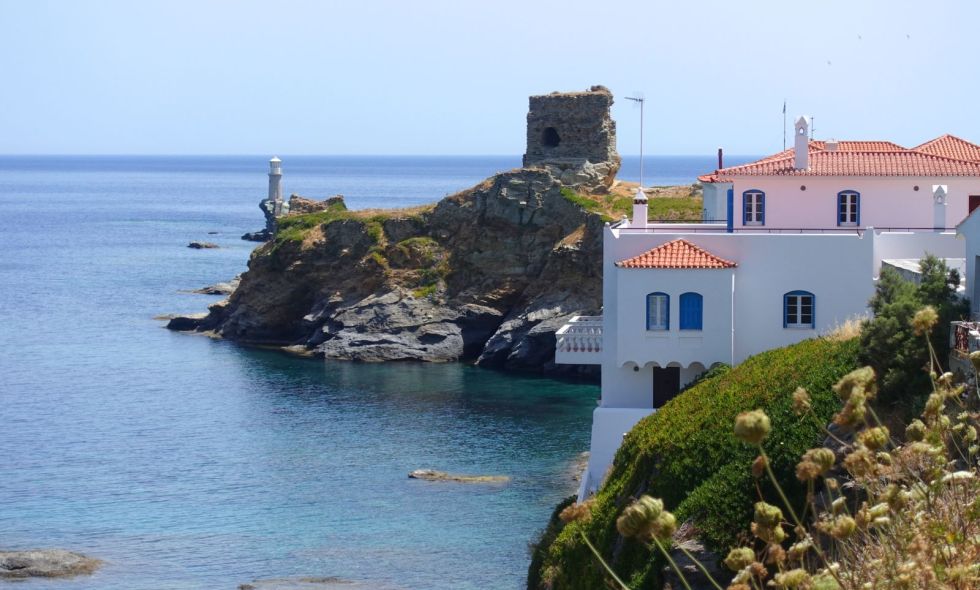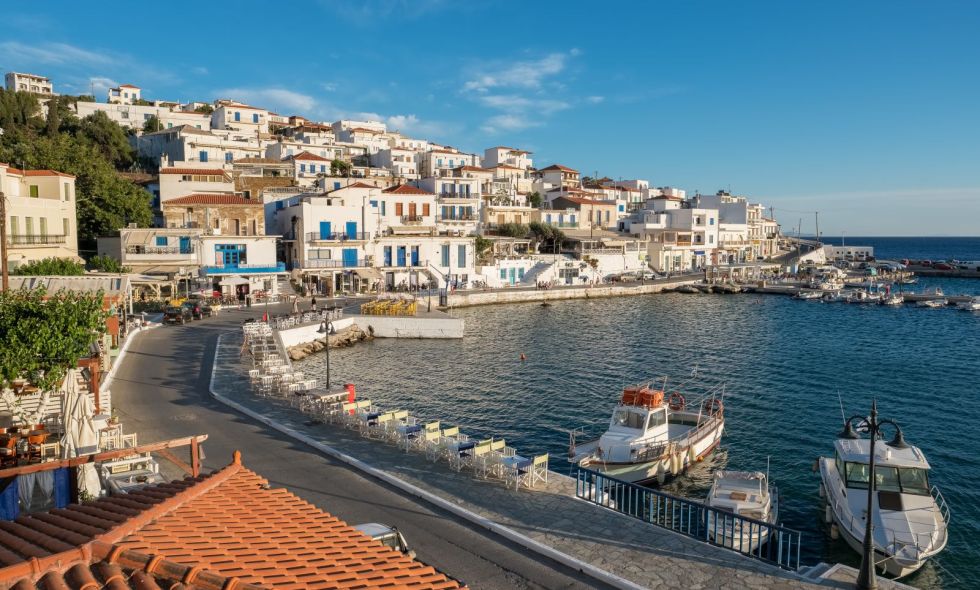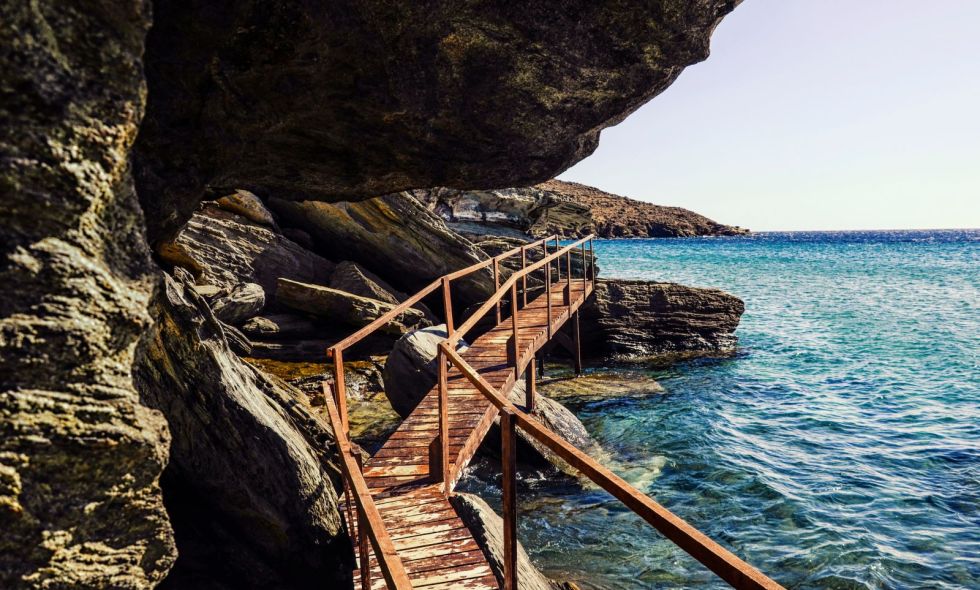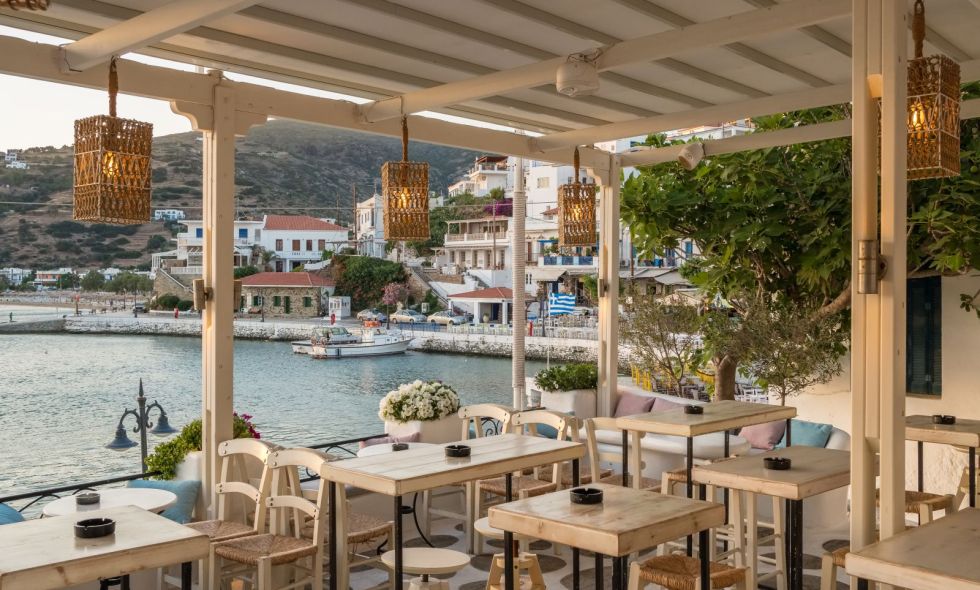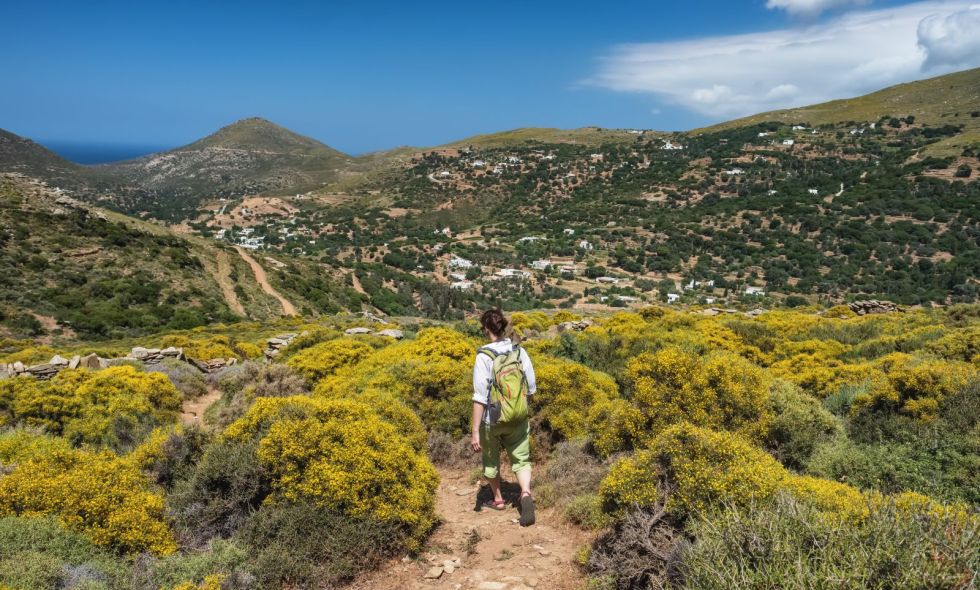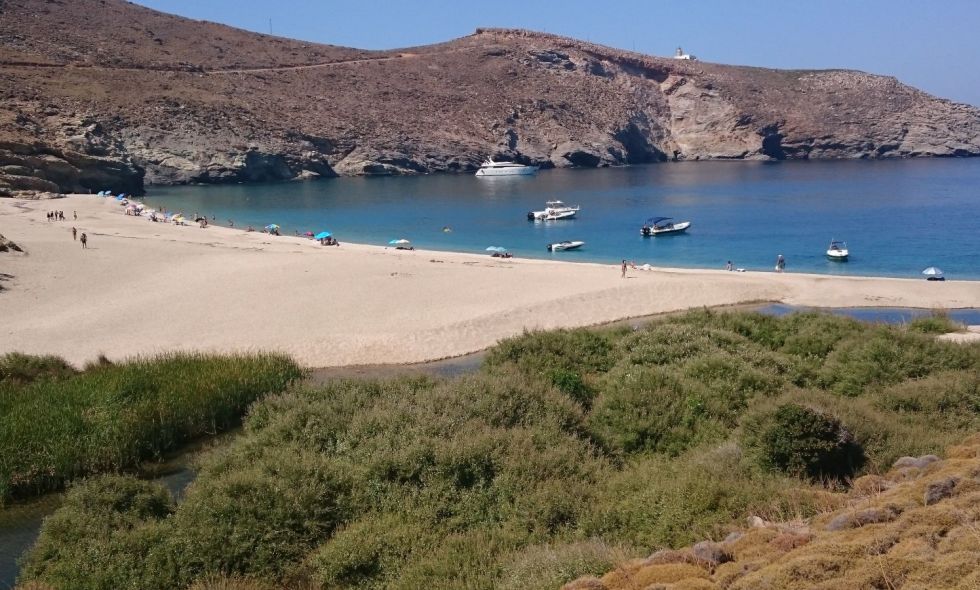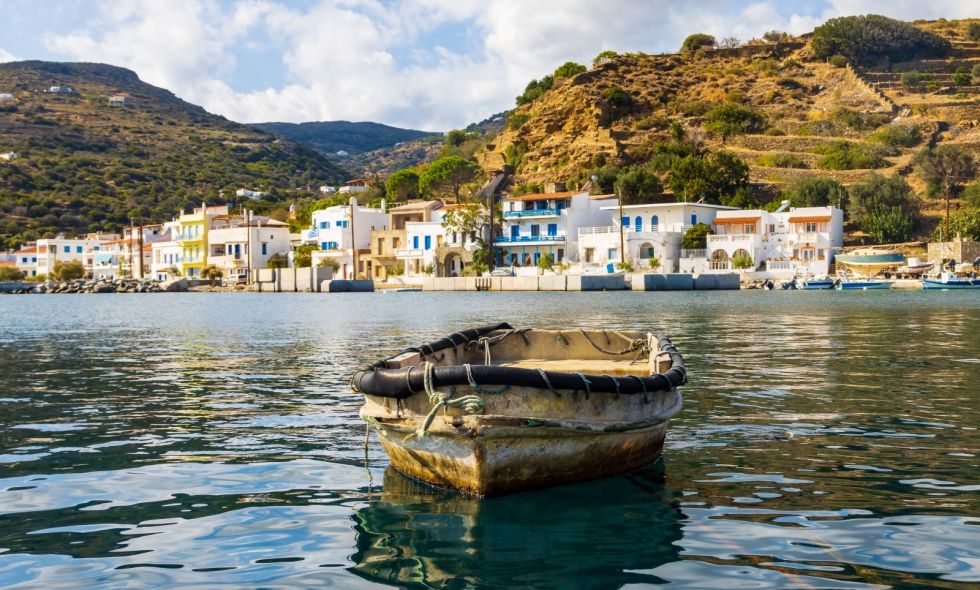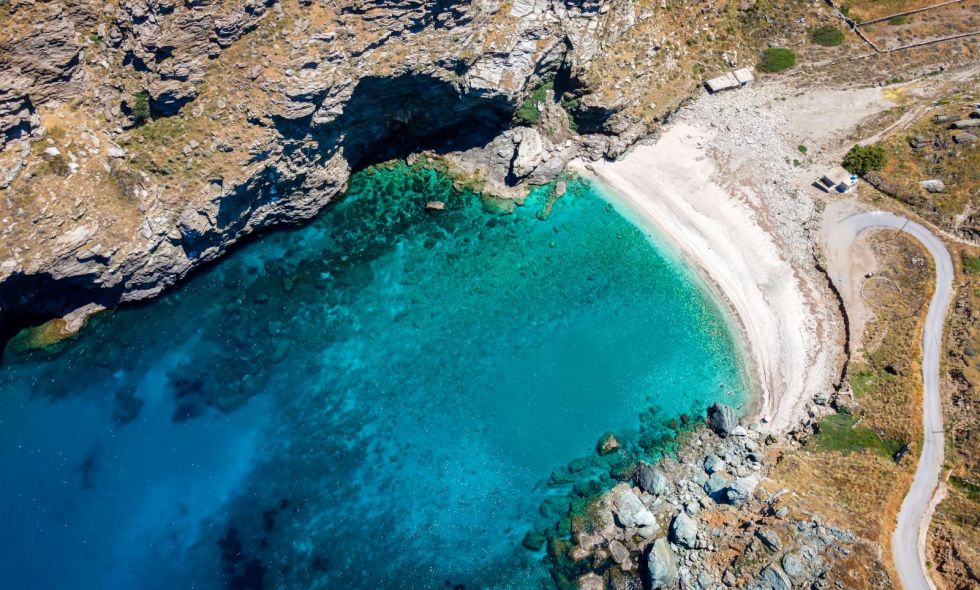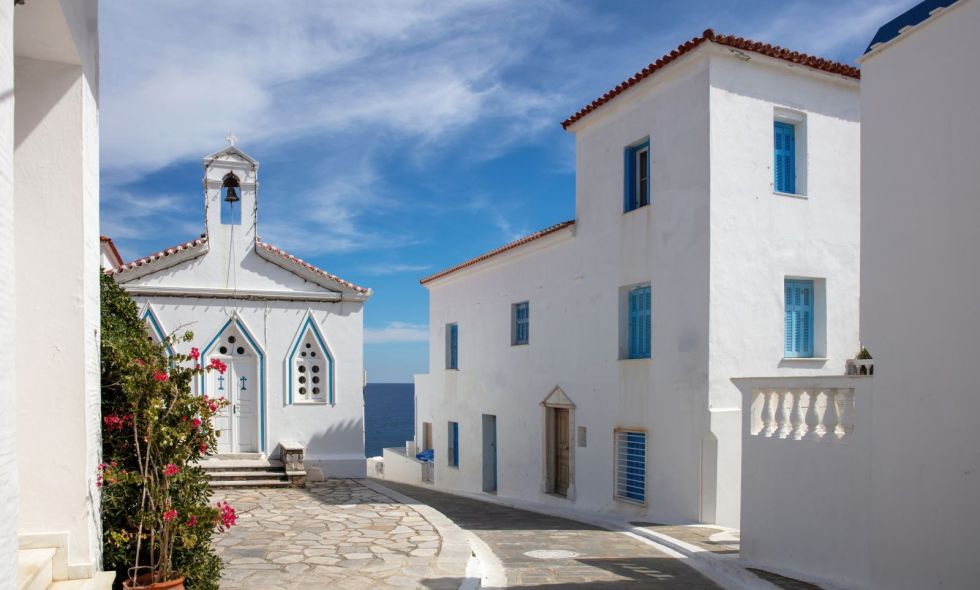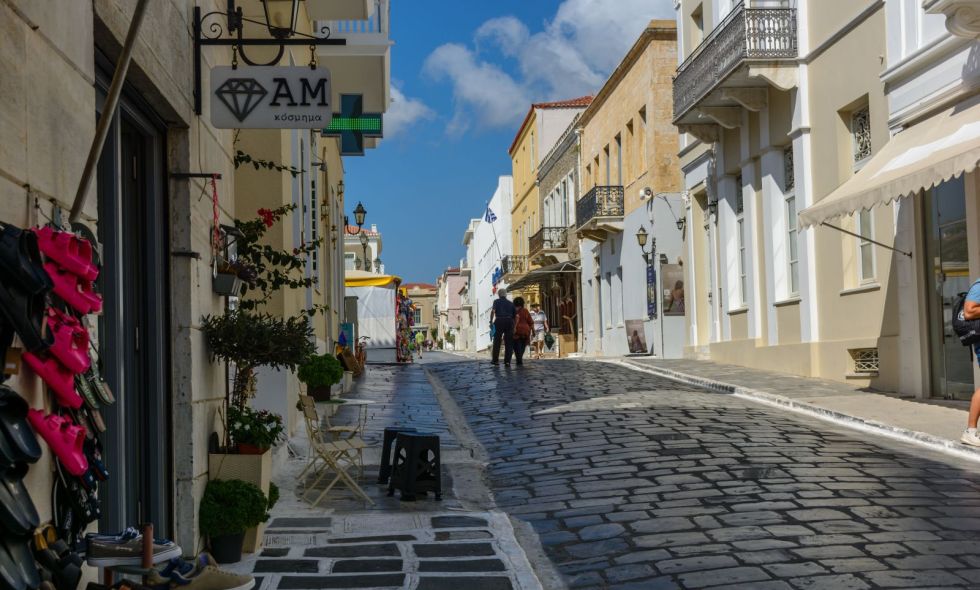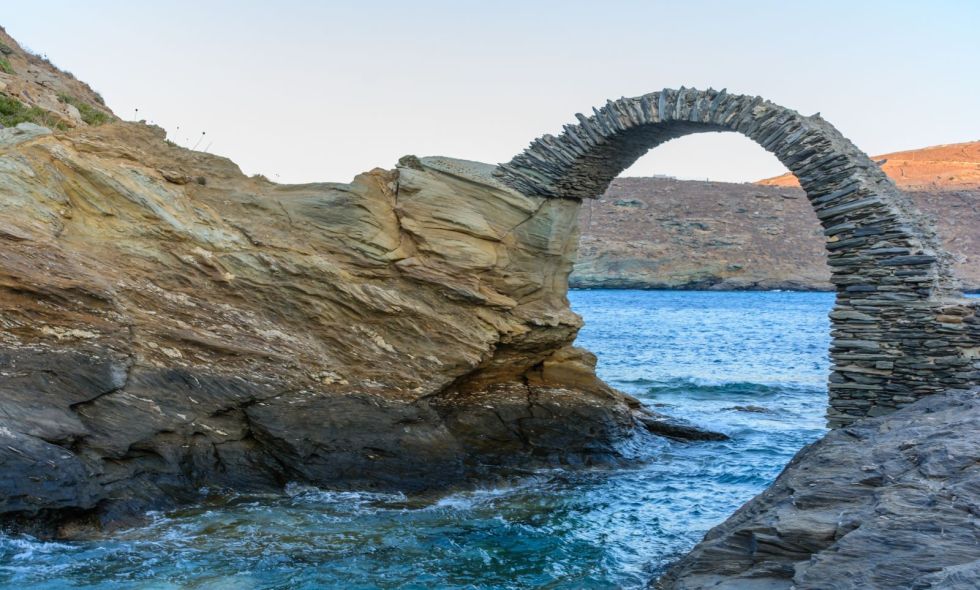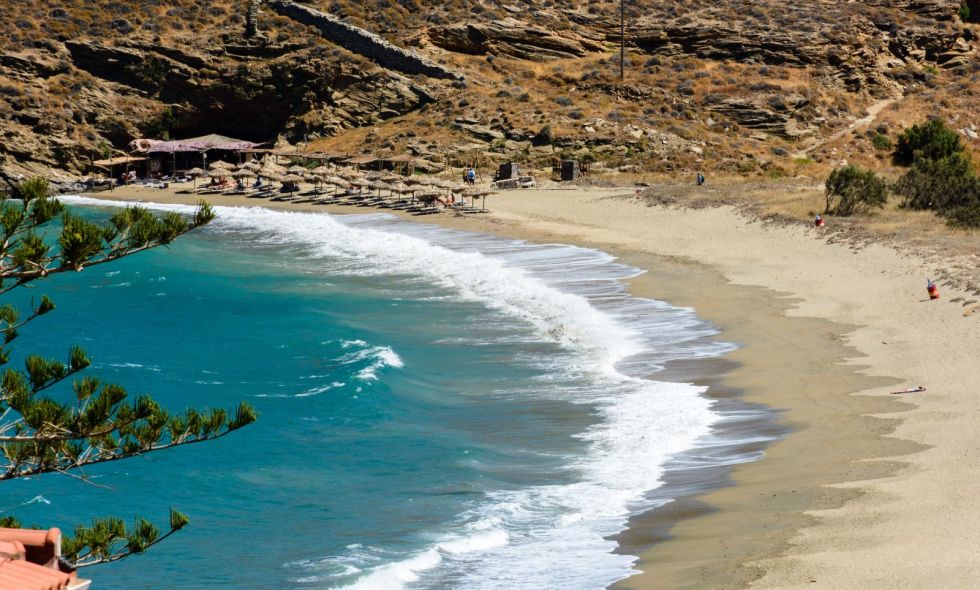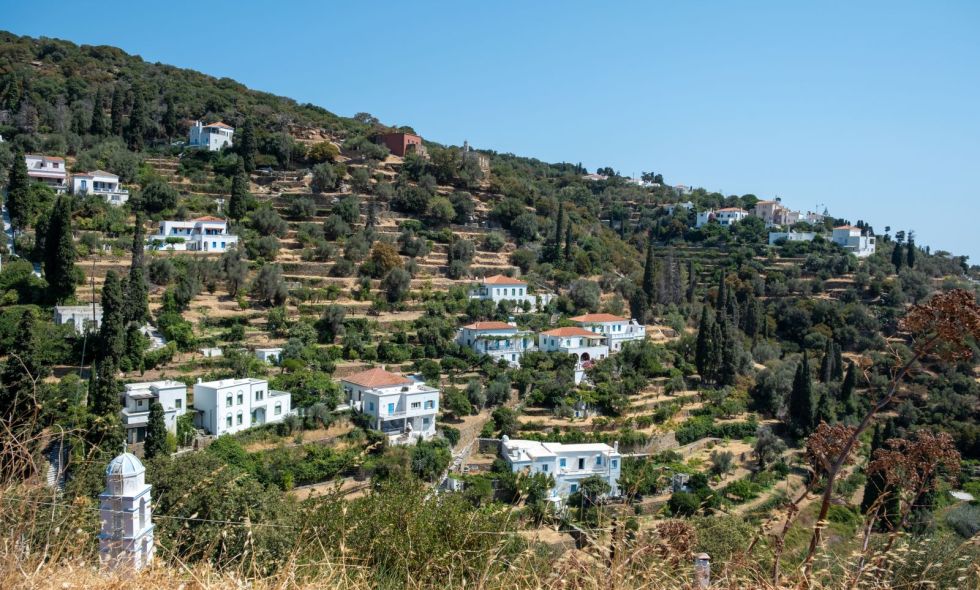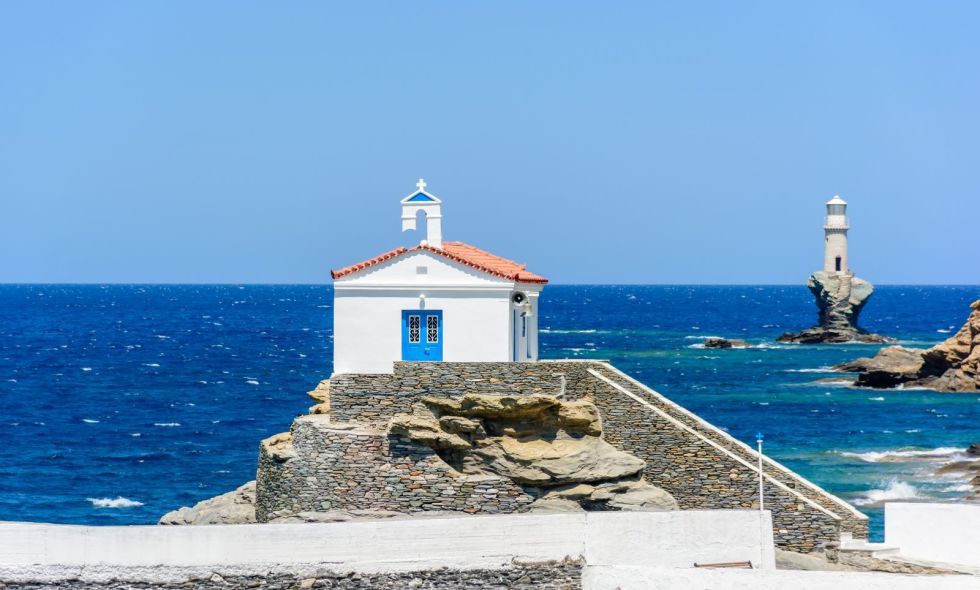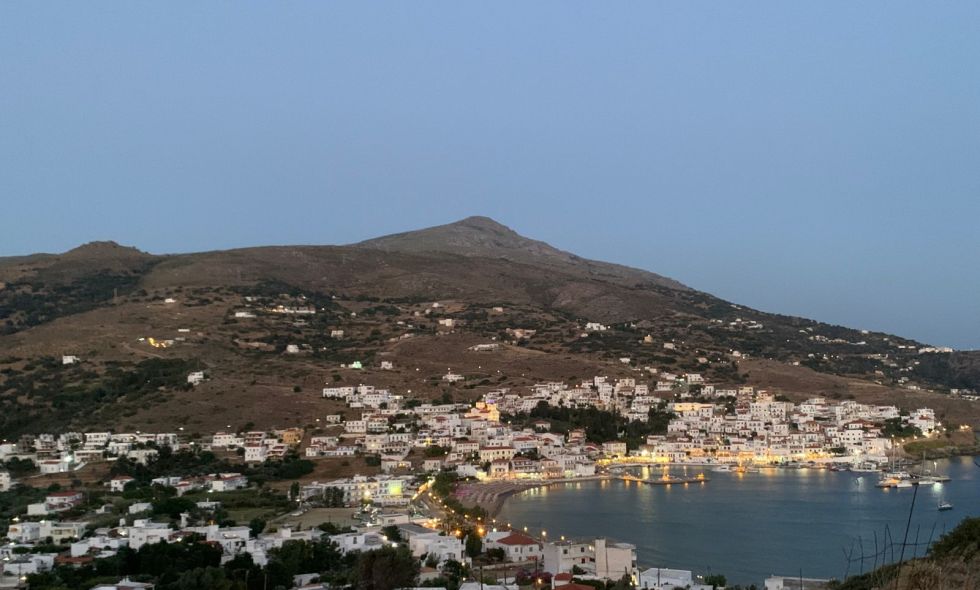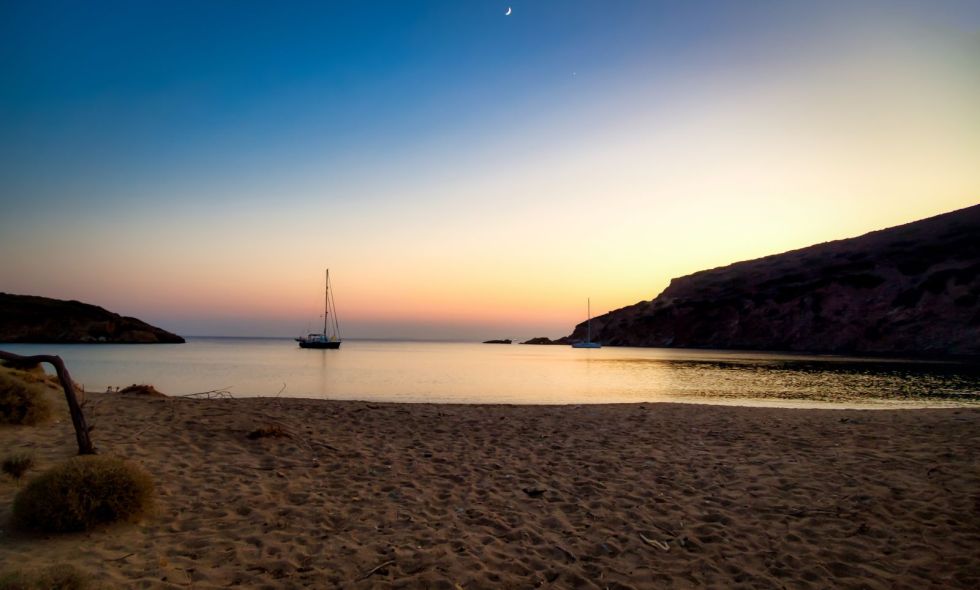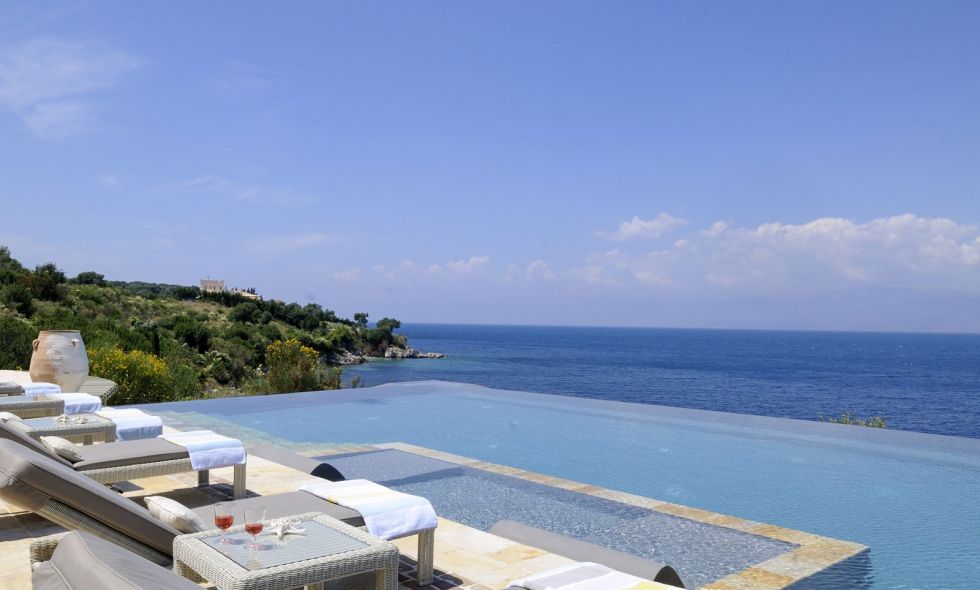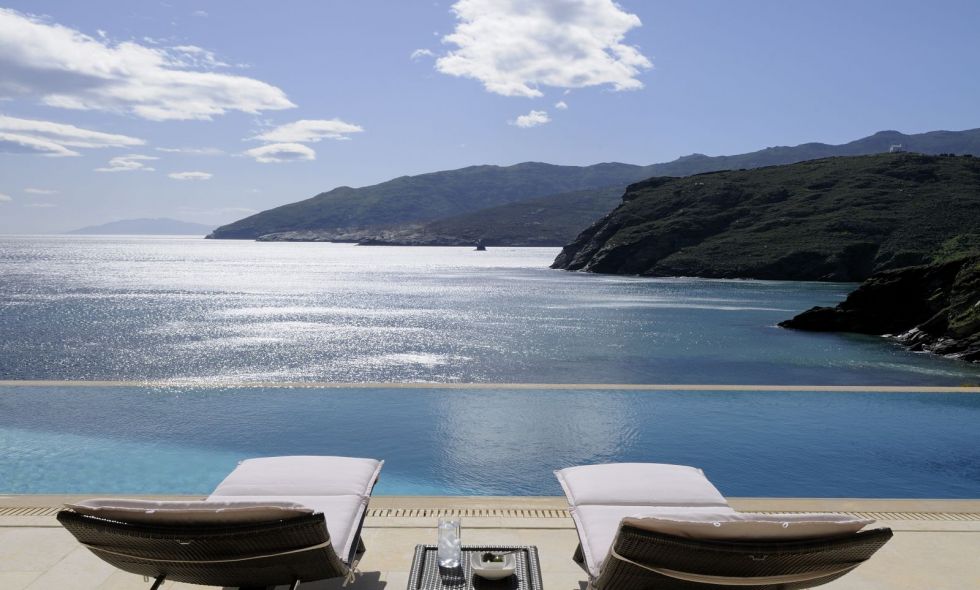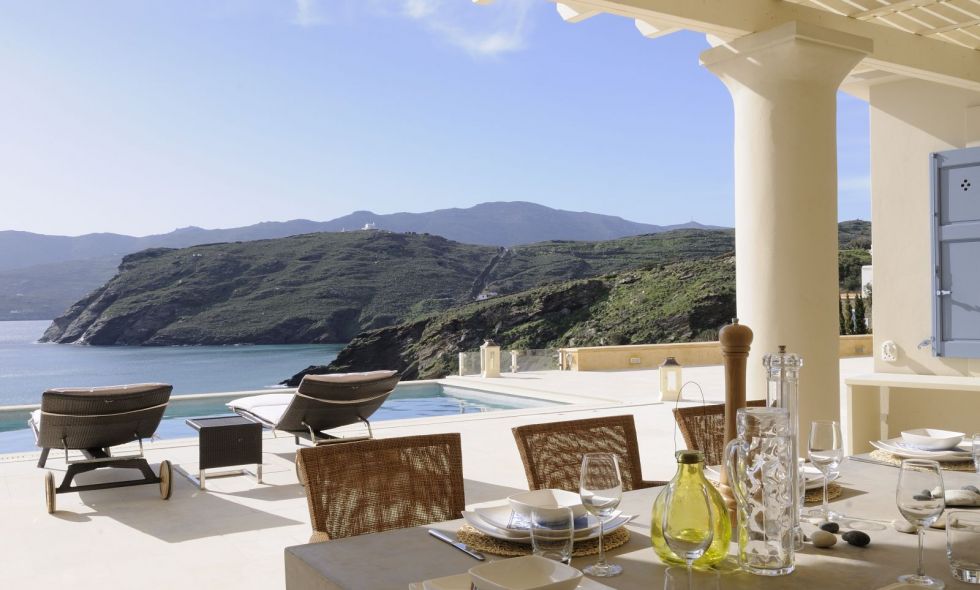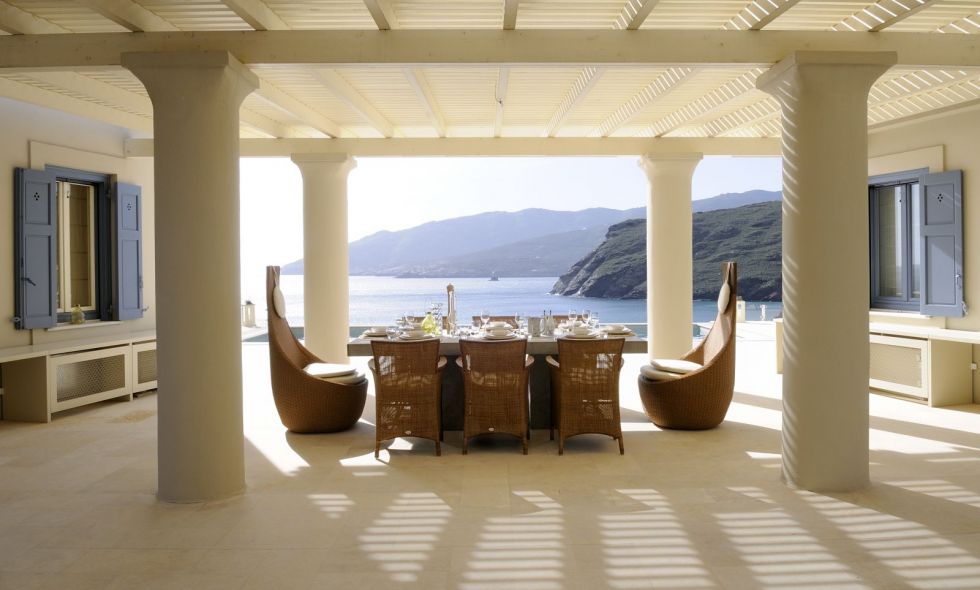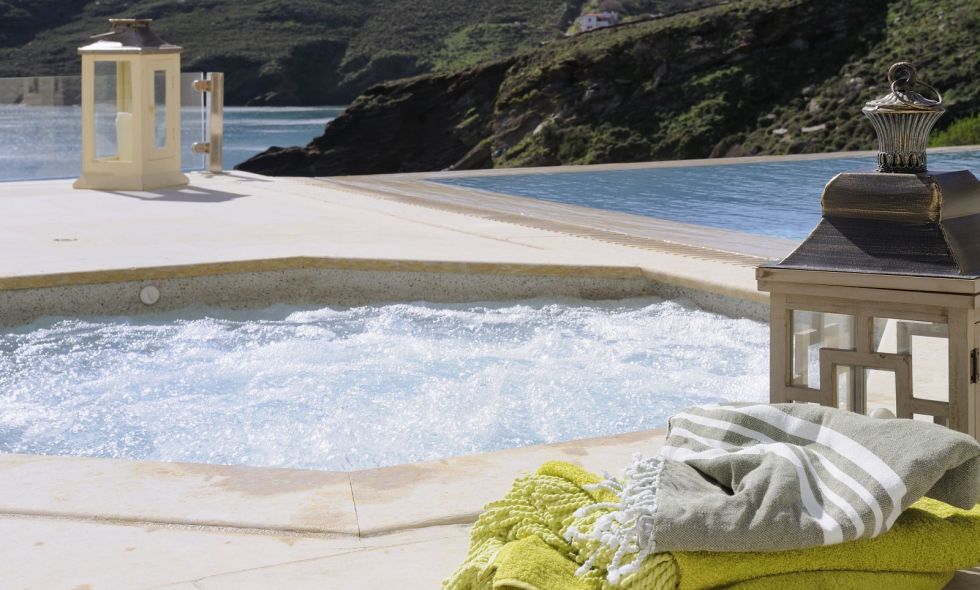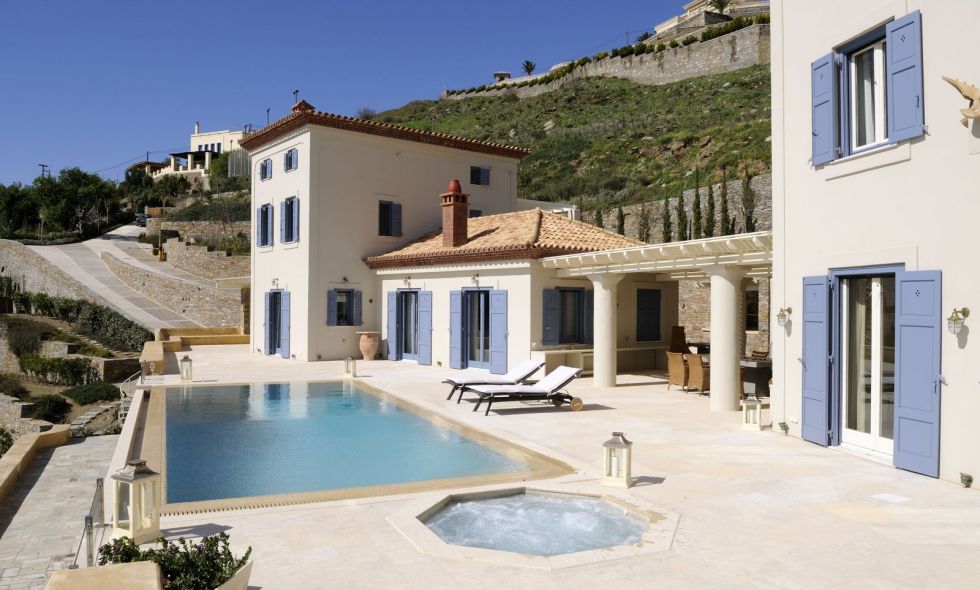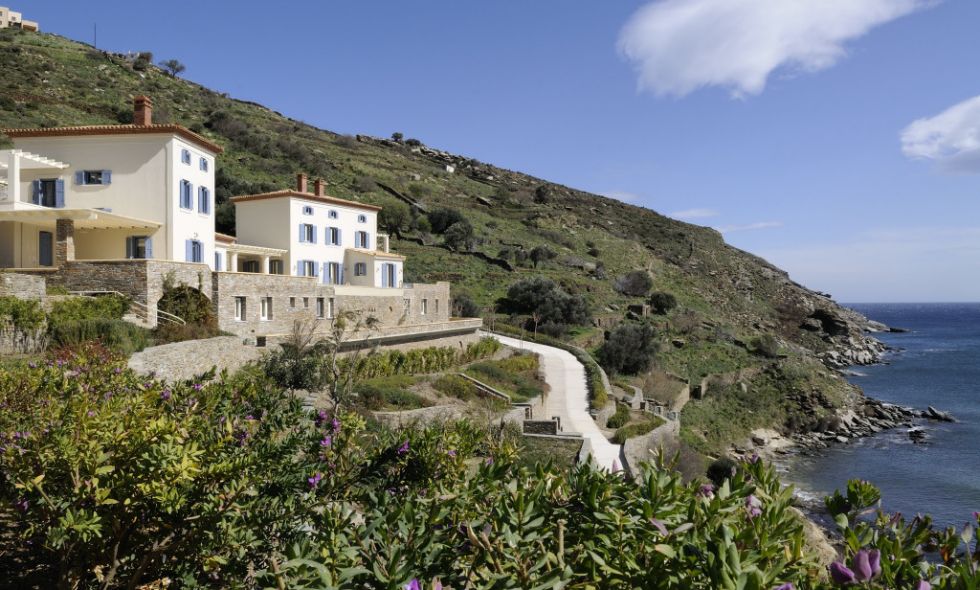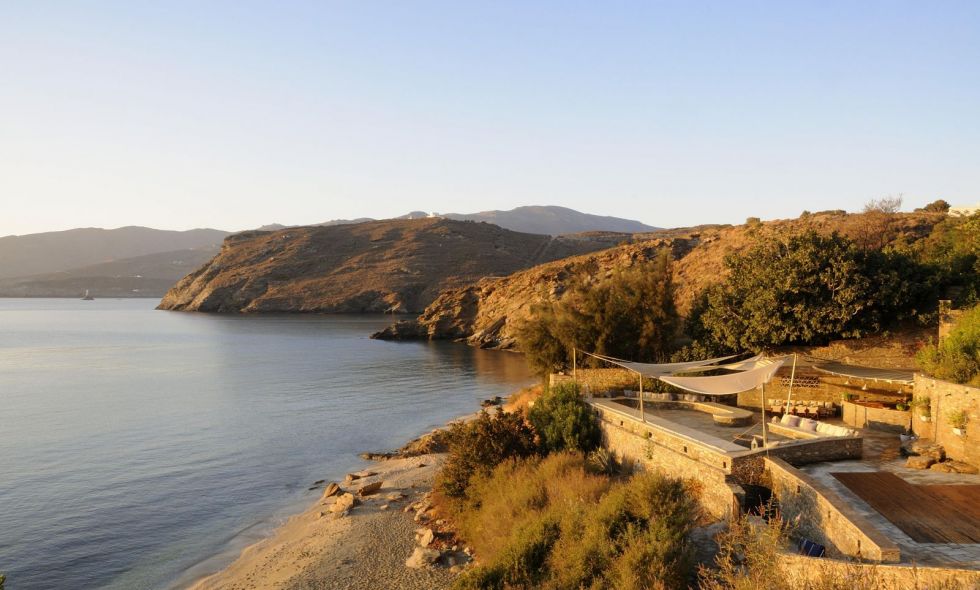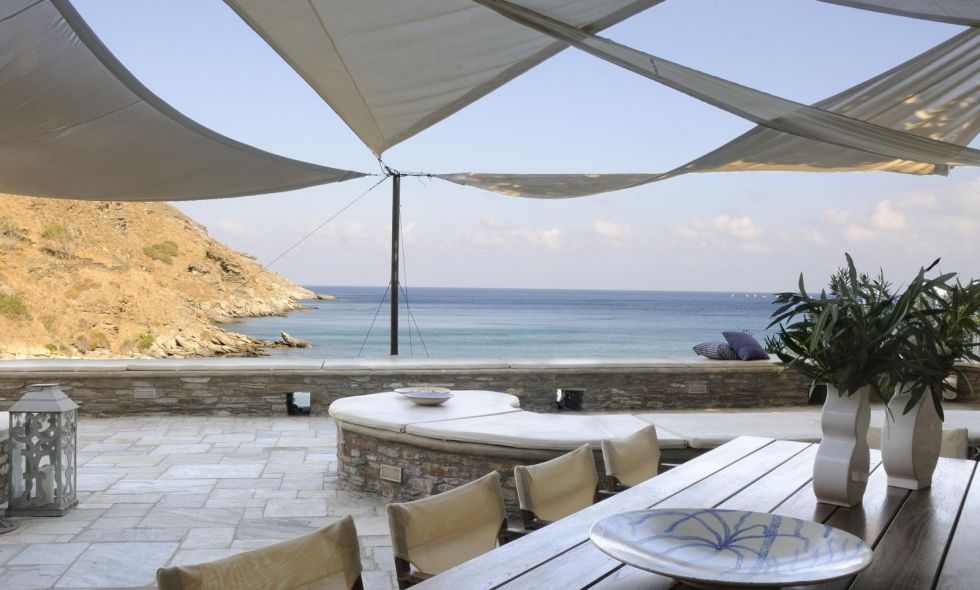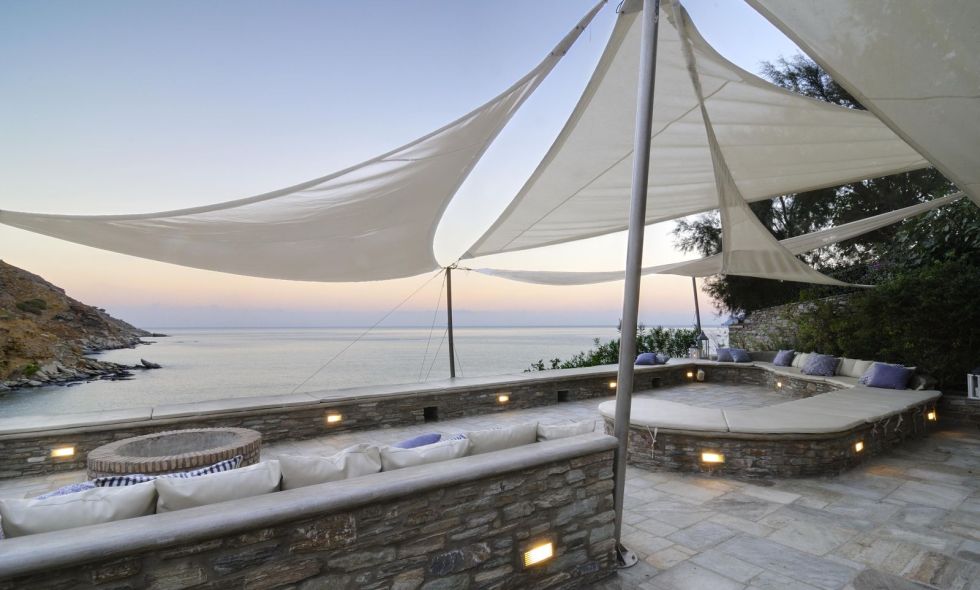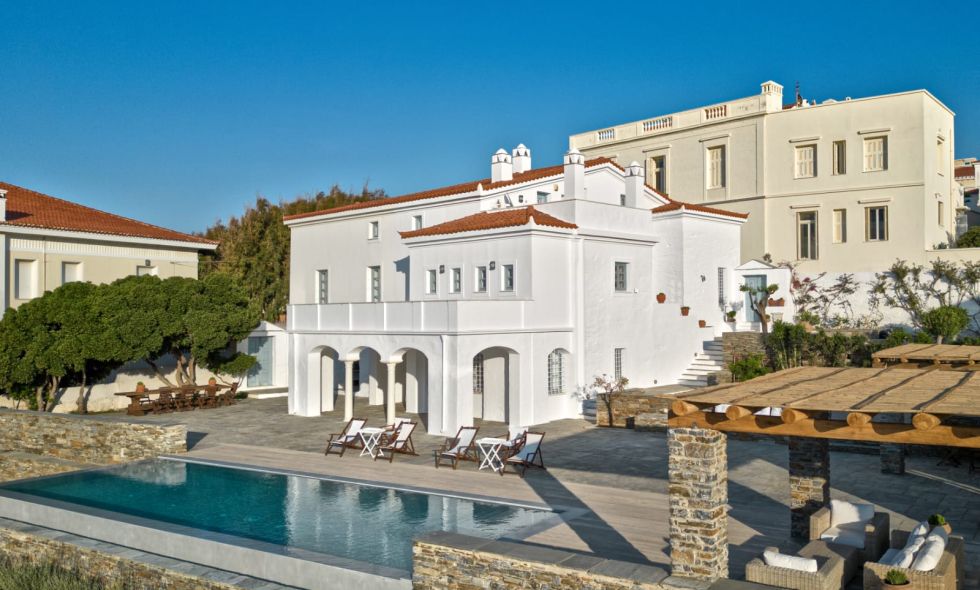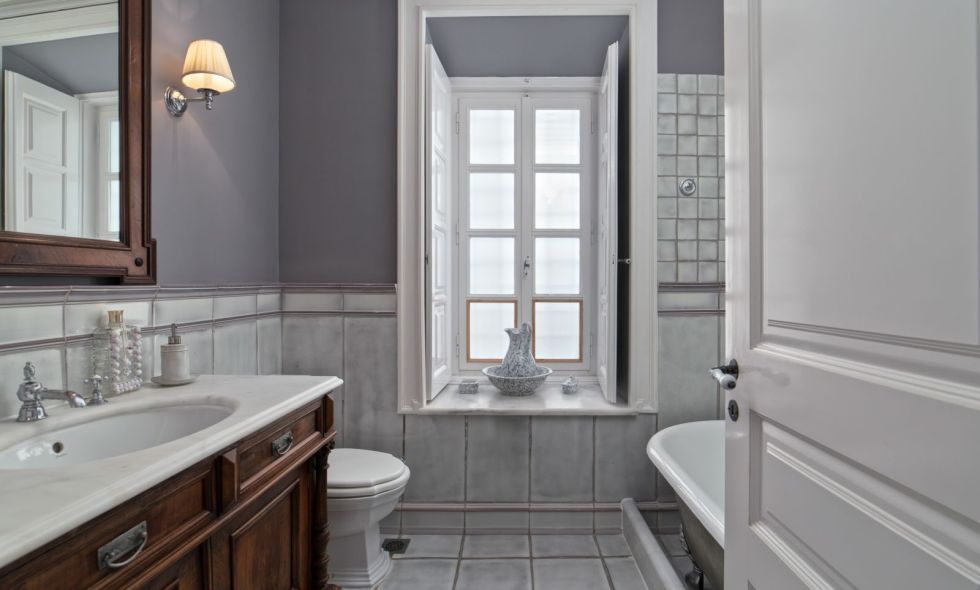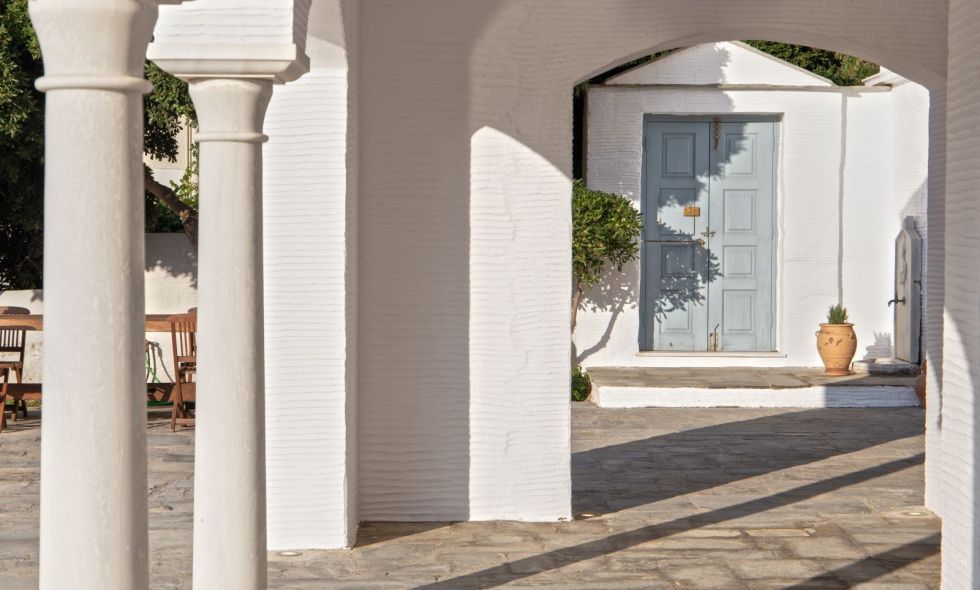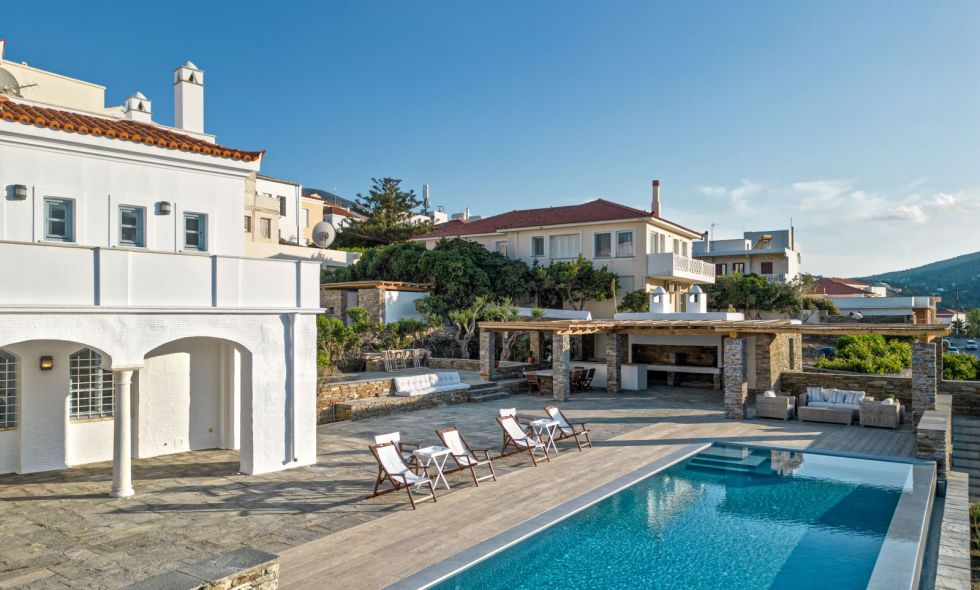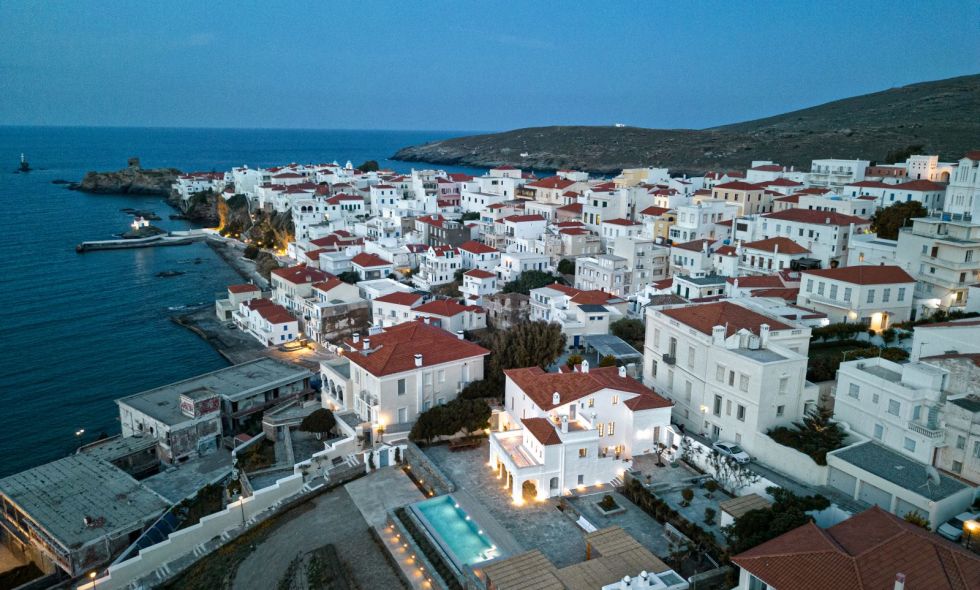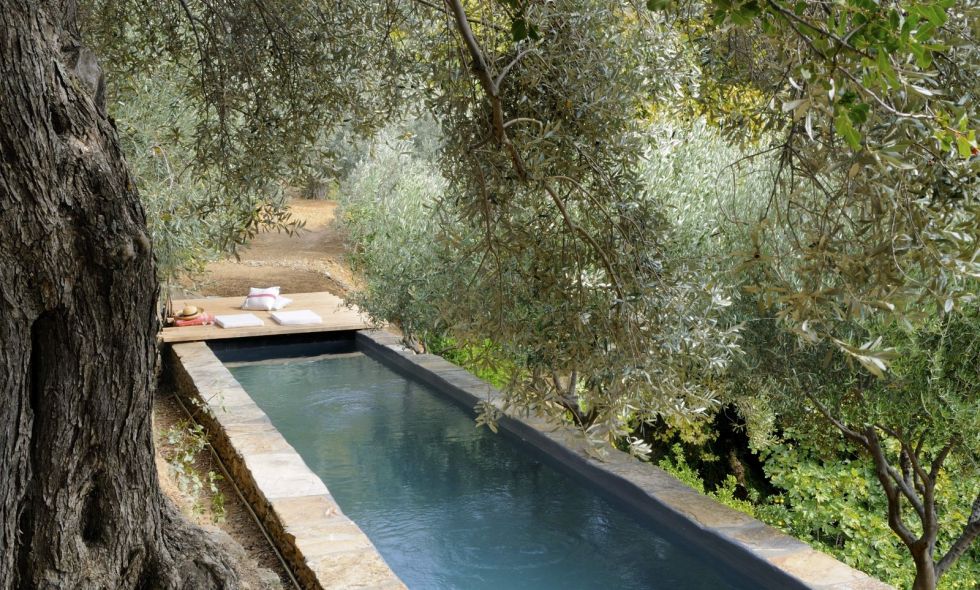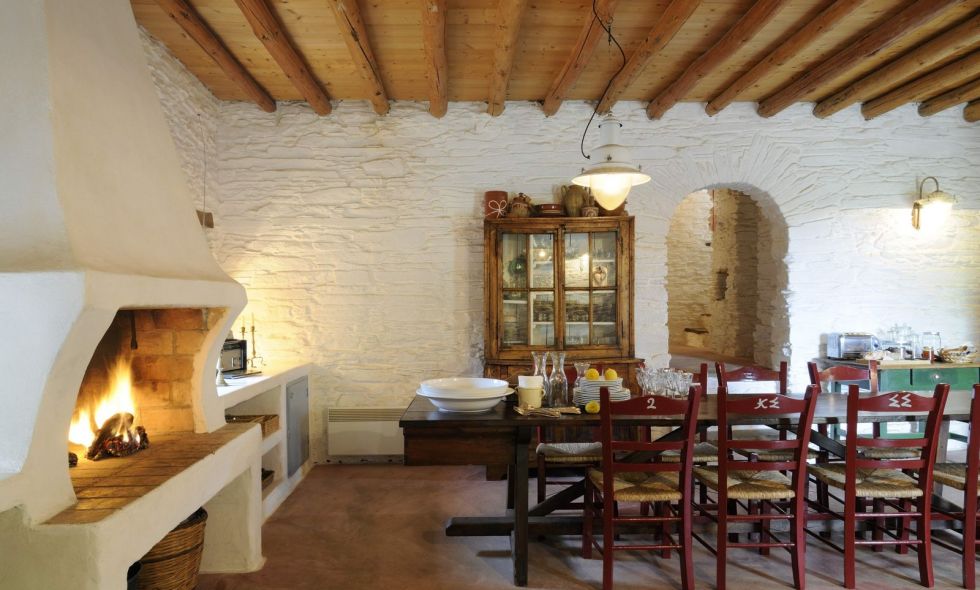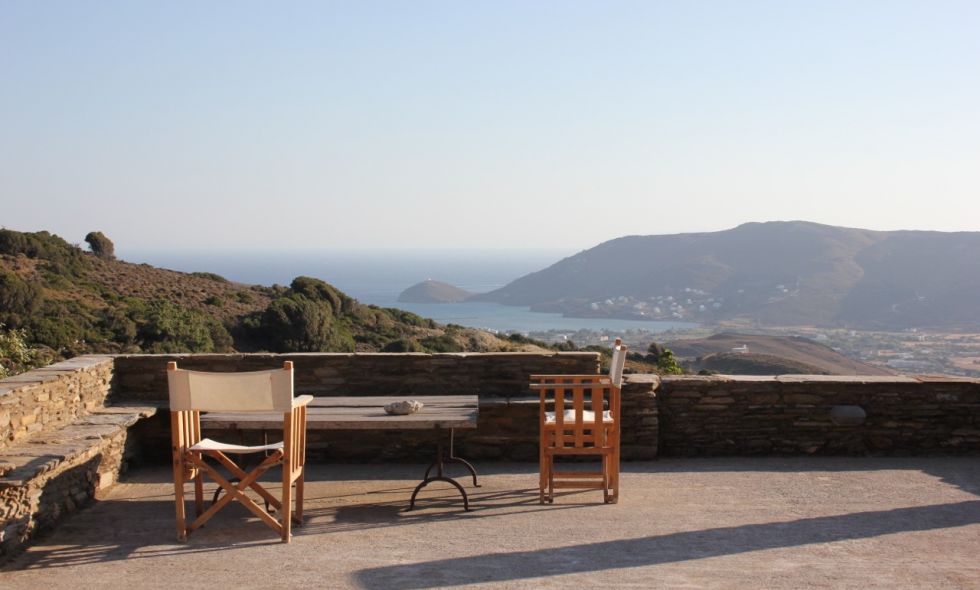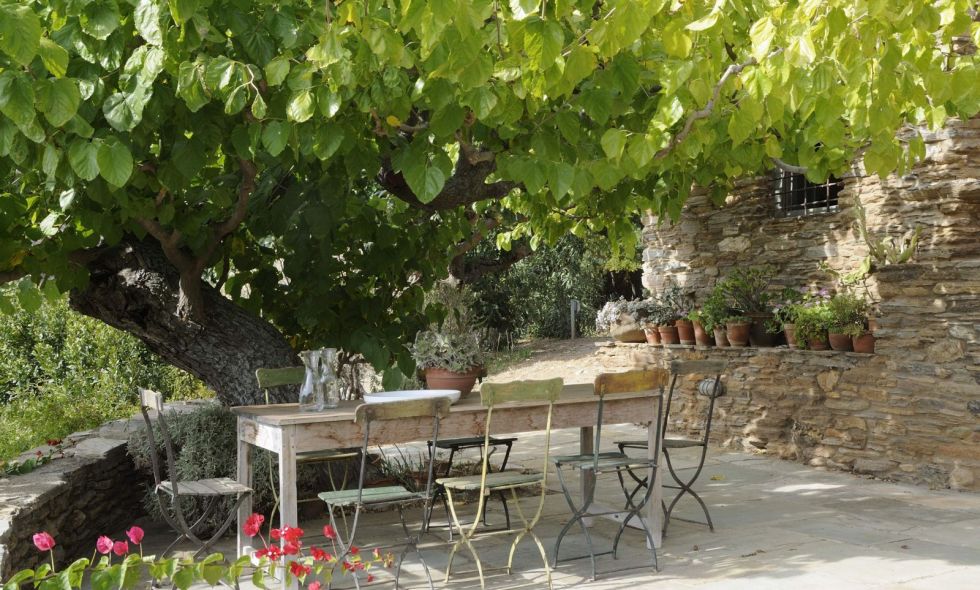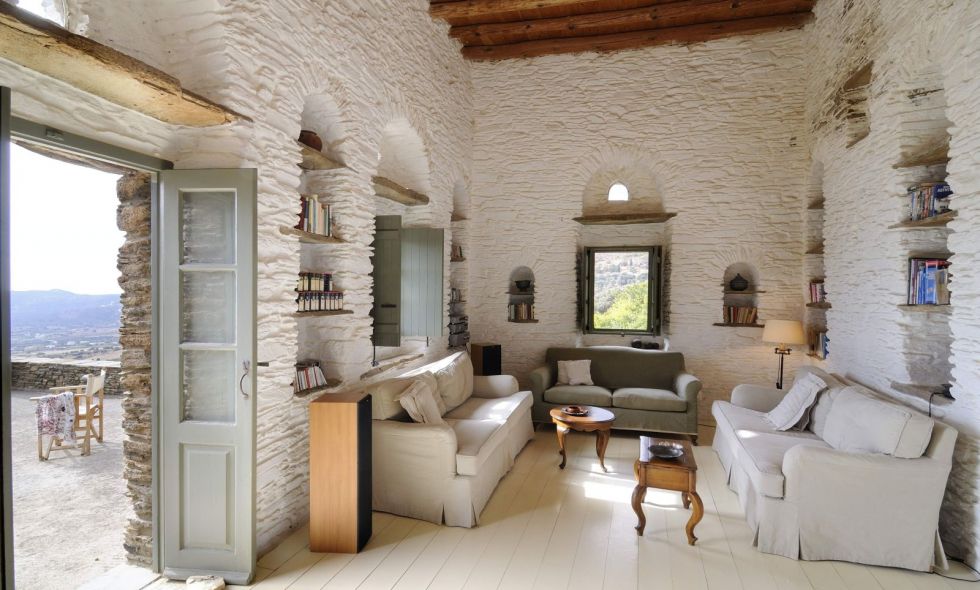Andros is a repository of 19th century history and tradition – some of the earliest shipping dynasties came from here, and both adorned and jealously preserved their beautiful island so that it stands out as a beacon of solid quality among the Greek islands. Bring hiking boots and some elegant clothes…
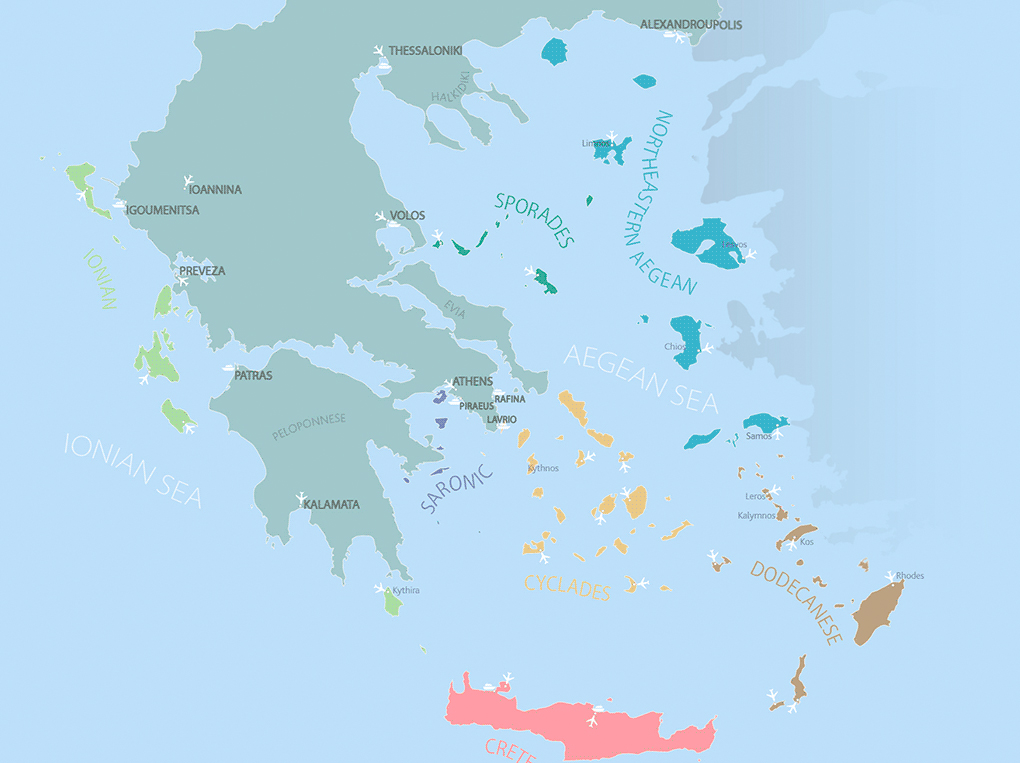
View Map
Andros Portrait
BEST PLACES TO STAY IN ANDROS
The essence of life in the Aegean is the delicate dance between extremes – East and West, Ottoman and Venetian, the sea and the land. Nowhere is this better illustrated than on Andros. The island is rich in running waters – green, lush, fertile, but with great barren mountains rearing up above the pastures and wetlands.
No other Cycladic island has had a class divide like Andros; farming families occupy the eastern side the island, one of the wealthiest shipowning communities in Greece the other, western side. Stone-carved galleons on door lintels denote Old Money (from Venetian times). This was replaced by New Money – 19th century shipowners quickly understood the advantages of steam over sail. The peasants, of medieval Albanian origin and also emigrés from the Balkan Wars of 1912, were on the bottom rung of the social ladder. Christian Albanians settled in the north-west in the early 15th century and still cook and speak their own way.
Andros is beautiful, modest and discreet. There are no glitzy emporia and few fancy restaurants. The neoclassical homes of the shipping dynasties (Embiricos and Goulandris amongst others) are full of well-heeled guests each summer, but their style is low-key and philanthropic. There are exciting exhibitions of antiquities and 20th century (mostly Greek) art in the main town of Chora, hosted by the Goulandris Museum of Contemporary Art, home to a permanent collection of works by – mainly 20th century Greek artists and various antiquities.
Traversed by four parallel mountain blocks with deep cultivated valleys, the hillsides are terraced with scattered farmsteads, orchards and vineyards. Oranges, lemons, figs, grapes, and olives all proliferate (the island’s citrus preserves and liqueurs are famous). Dry-stone schist-slab walls, pack-bridges, watermills and low stone farmhouses, as well as intricately decorated dovecotes, sprinkle the landscape. There are even cows in green pastures. The more barren north-west is popular with Athenians and foreigners who want a country or summer home. The rather lacklustre port of Gavrion is only two ferryboat hours from the mainland. The south and east have more sheltered and accessible sandy beaches.
BEST FOR
Aesthetes. Elegant and coolly understated, Chora is a gem of a little capital, built on a sliver of land jutting into the sea; it’s full of neoclassical buildings, untouristy shops, art galleries and fascinating museums. Fabulous sandy beaches – when the wind drops.
Lovely churches and monasteries that attract local pilgrims all year round.
WORST FOR
Andros is renowned for its strong winds, mainly at the end of July and August, when guests flock to the beaches that are sheltered. It is only the local boatmen, who row and steer standing up, and turn their oars without breaking the surface, who are really the masters of this sea.
WOULD SUIT
Nature-lovers. Over 170 kilometres of walking trails across aromatic hillsides, through ravines bubbling with waters leading to picnic spots on pristine shores.
Foodies— Andros women were famous for their cooking and beauty Poor island women travelled to rich households in Egypt or Constantinople as wet nurses for society mothers, and brought back culinary delights such as The Imam Who Fainted (rich layers of baked aubergines, onions, and tomatoes), meat, rice and mint balls in egg and lemon sauce, spiced kebabs, and exquisite sweets. Korthi and the south-west were settled by Greeks from Thessaly, who have a tradition of delicious savoury pies.
Socialising- if you have connections to the Andros shipping families, life in Chora is a whirl of drinks and gatherings, shuttling between yachts, the Andros Yacht Club, villas and private houses.
WOULD NOT SUIT
Those who dislike driving, as Andros is large and mountainous with big distances. Beach access needs a car
Those who can’t manage the wind.
DON’T MISS
The fabulous fortress-like Monastery of Aghia Marina in Apoikia.
Zorkos and Vitali are sensational off-the-beaten-track beaches on the north-east coast, each with a taverna run by farmers showcasing their produce, from lamb chops to local creamy cheeses and vegetables. The mineral springs at Apoikia are bottled for national consumption under the name Sariza; wander past the springs and you come to tinkly waterfall and rock pool. The most beautiful dovecotes are at Aidonia and Kaparia; their motifs are never identical but always favour the sun-wheel, the lozenge and the cypress tree.
The little Maritime Museum in Chora – Andriots established the near-monopoly of goods and emigrants bound for Ellis Island and America in the early 20th century.
Traditional tavernas and flavours abound: order the rooster in red sauce at Kria Vrissi in the leafy hamlet of Ano Katakoilo; lamb chops and fried courgettes at Kossis farm-to-table taverna, not far from Gavrion port; and make a pit stop at Andriakon delicatessen on the waterfront at Gavrion for the most delicious provisions, from caper leaves to goat’s cheese.
THINGS TO DO IN ANDROS
Walking and exploring. Gentle strolls through verdant valleys at Livadia, Apoikia, Messaria and Menites. Other more challenging hikes are well–mapped by Andros Routes. Serious hikers can tackle the 10-day, 100km route running from north to south.
Take a boat ride from Chora to Achla beach, a great white sweep of sand surrounded by a nature reserve buzzing with wildlife.
Batsi, a picturesque curve of a resort, has watersports, caique excursions to nearby beaches, plus car and motorcycle rental facilities. It’s also a good spot for a sunset aperitif at Buka Bar or Kolona Beach Bar, on a sandy bay not far from Batsi.
Snorkel around the underwater city of Palaiopolis and you might spot submerged amphorae and fragments of marble. Stop at the kiosk above Palaiopolis beach to stock up on home-made ‘spoon sweets’, such as lemon blossom and walnuts preserved in syrup. Shop for printed tunics, clutches, leather sandals, and pretty jewellery at Waikiki in Chora. An arts festival, curated by renowned Greek film director Pantelis Voulgaris who has a house on Andros, takes place in the outdoor amphitheatre of Chora every August.
HIGH SEASON
Large and independently wealthy, Andros remains one of the least touristy spots in the Greek islands, despite its proximity to Athens. Rampant development has been kept at bay. Cars are banned in some parts of Chora.
LOW SEASON
The Andros on Foot festival in October attracts ramblers and conservationists from many countries. Plenty of tavernas and businesses stay open year-round and the local community is strong and welcoming. You might even find yourself in an old-style sing-a-long in an ouzeri with an oldster reminiscing “the sea is my mother, my sister is the wave, my lovers are the little fishes of the seashore”!
We do not show villa details on our site to protect the exclusivity of our owners’ properties. We offer a unique personal service to locate the perfect villa or yacht for you – to see villa details and get our expert guidance and insight please get in touch.
Our Villas in Andros
Read about our villasNoble 19th century mansions in the neo-classical style, iconic Cycladic cubic design and stone-built rustic cottages - Andros offers a variety of houses.

